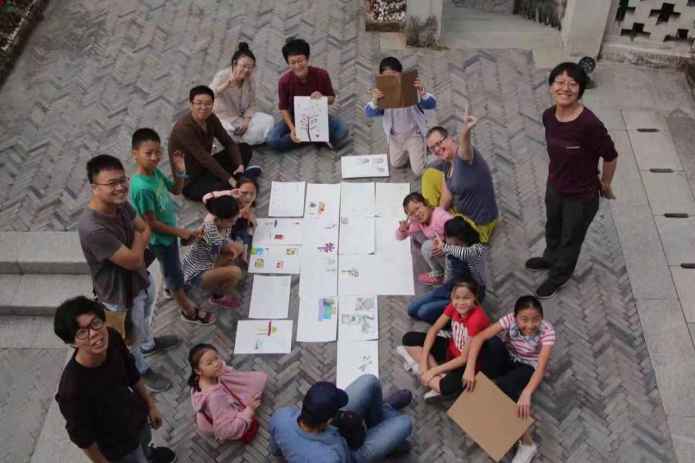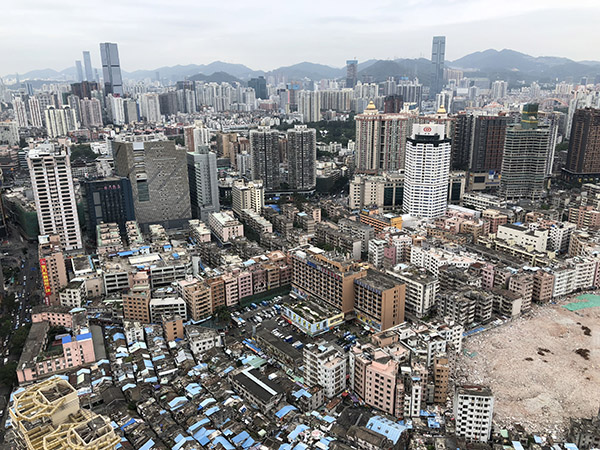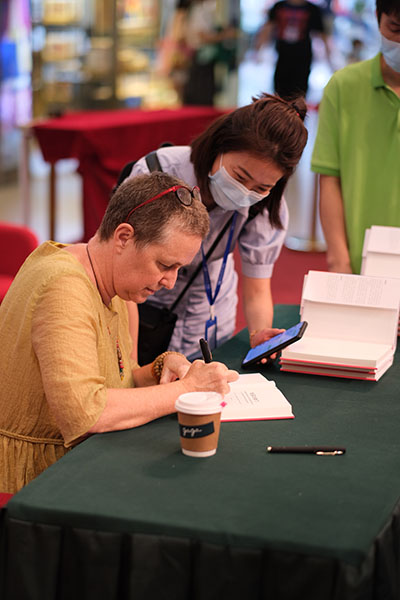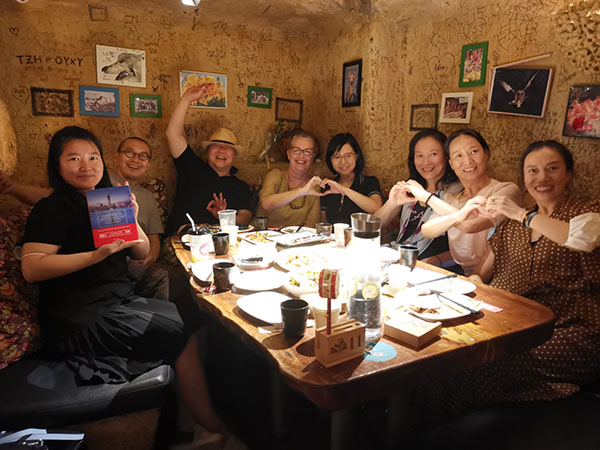Last night had a pleasant if strange experience as a guest on a live talk show on Shenzhen’s traffic radio station. The station usually plays music and gives traffic updates. They also collaborate with the Municipality to organize discussions relevant to folks stuck in traffic. Indeed, as one of the other guests said, “If Beijing is 首堵 (都) [“the first in congestion” (puns “the capitol”)], then Shenzhen is deeply, deeply congested [深深堵].” Last night’s topic was “宜居城市 (Livable City),” but focused on how to ameliorate Shenzhen’s traffic jams as if the problem wasn’t our addiction to oil, but organizing highways. My favorite comment – Shenzhen needs to initiate “vehicle family planning (汽车计划生育)”.
I was invited to give a foreign perspective on Shenzhen’s worsening traffic problems. Uncanny moment this invitation. I was born in L.A., Mother of all Traffic Jams and once out of the Jersey ‘burbs, I have tried to live in cities where I don’t need to drive. My advise to Chinese urban planners? See what L.A. and Houston have done and do the opposite. If you’re looking for a positive urban role model – Amsterdam and Copenhagen have much to teach the world about healthy, sustainable traffic planning. But the US? We dismantled our nascent public transportation system, use 1/4 of the world’s energy resources, and won’t consider even gutted treaties to limit greenhouse gas emissions. No no and no.
The 1.5 hour event was held at the Central Book City, South Building Bleachers, where many of the City’s public culture events are held. The Bleachers are used for reading, resting, and hanging out. In fact, the Bleachers are one of the few spaces in the Central Book City Mall where people can sit and rest without purchasing a refreshment. The Book City Bleachers has become an interesting space in Shenzhen’s public sphere because it is (literally) situated between the City [government] and high culture consumption [Book City]. Consequently, events held there have a certain public intellectual cache, linking official approval to intellectual life and cultural performance. However, lest we forget the importance of [positive] audience reception, last night, the Bleachers are cordoned off and access regulated by strategically placed organizers. We performed for about thirty, red vested members of Shenzhen Volunteers and invited guests, including the parents of first or second graders who read a pledge to be more traffic conscious.
Inquiring minds want to know, “Who was there?” and “What does this tell us about how Shenzheners represent themselves to themselves?” In other words, “Who do Shenzheners think they are?”
Well.
Of the six guests, I was the only woman. I’m not sure if this means that my foreign status compensates for ovaries or if they couldn’t find a suitable female urban planner (although off hand, I can think of several women who would have added interesting commentary). Gender aside, guests included: a public intellectual, the head of an urban planning think tank, a member of the Livable City subcommittee of the SPPCC (Shenzhen People’s Political Consultative Committee), an editor from an online community of home owners, the radio station commentator, and a foreigner. Importantly, guests shared “representative” status. In other words, organized selected a guest because he (and moi) represented a constituency of Shenzheners. Moreover, this representative status meant that the guests could “speak for” (all) Shenzheners.”
Thus described, the right to speak in Shenzhen’s public sphere is dominated by intellectuals, officials, homeowners, and what white America thinks.
Now, it’s possible we knew this. It’s also possible some of us said something slightly beyond the script and inspired a new thought somewhere – because yes, there was a script. Before the talk, we were contacted and asked what we wanted to say about making the city livable. Our comments were then edited into a basic outline of how the discussion would go. Moreover, the moderators kept us more or less on task, talking about how to ameliorate traffic jams (better urban planning and more driving civility). And maybe it’s possible that modeling public discussion in this way (town meetings with Chinese characteristics) will prompt the creation of alternative and equally influential public spaces. For example, yesterday afternoon, The Southern Daily held it’s first Neighborhood Heroes Finals (家园英雄) in Meilin. Clearly, a source of other perspectives on traffic jams.
But I think it’s also possible that we’re missing something more fundamental – foundational, if you will: how we organize our events may be why problems deepen, our good intentions notwithstanding.













